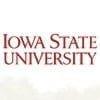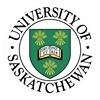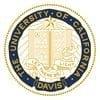Explore all the information on
Dairy cattle nutrition
Welcome to the page about Dairy cattle nutrition of Engormix; a source of knowledge on Dairy cattle nutrition.
Actisaf® Sc 47 helps optimise dairy management to deliver full genetic potential, improving breeding efficiency and profits in today’s farming environment in which sustainability is highly prized....
Comments : 0
Recommendations: 0
There is no general consensus about a method to assess the bioavailability of rumen-protected methionine (RPM). Measuring methionine (MET) concentrations in blood can be misleading because of differences in the coating technology, which impacts the release of MET. Indeed, MET from Mepron® (85% DLM; Evonik) is protected with ethylcellulose and is released during intestinal “abrasion” of the coating, leading to its slow release into the blood. Conversely, RPM products coated...
Comments : 1
Recommendations: 2
Dr. Ryan Ordway, Global Director of Strategic Accounts at Balchem, explains how Balchem has become a leader in rumen-protected methionine and also about its ongoing research and development projects
...
Comments : 0
Recommendations: 0
Samuel-Pierre Camus, EMEA Director of Balchem Animal Nutrition & Health, offers details about the Choline production worldwide developed by Balchem
...
Comments : 0
Recommendations: 0
Samuel-Pierre Camus, EMEA Director of Balchem Animal Nutrition & Health, shares his views on R&D projects related to choline production...
Comments : 0
Recommendations: 0
Introduction Suboptimal milk yield limits the U.S. dairy industry’s productive competitiveness, marginalizes efforts to reduce inputs into food production, and increases animal agriculture’s carbon footprint. There are a variety of circumstances in a cow’s life which result in hindered productivity including heat stress, rumen and hindgut acidosis, feed restriction, and psychological stress associated with normal animal practices (i.e., pen changes, weaning,...
Comments : 1
Recommendations: 1
Introduction The metabolic cages are used to study the metabolism of feeds in the animal. Metabolic trials are conducted to collect the feces, urine and feeds residue using precisely for analysis nutrients intake, digestibility, nitrogen and mineral balance. It is generally conducted in confined shed/shelter with underground place for urine collection. It is observed that due to movement of animal urine collection pipes comes out of the drum resulting in loss of urine. In this...
Comments : 3
Recommendations: 2
Dr. Mubarak Ali, Senior Technical Service Manager Asia South at Evonik Animal Nutrition, points out the importance of using amino acids in dairy cattle Importance of Amino Acids in Dairy Cattle, for better performance and greater sustainability....
Comments : 0
Recommendations: 1
Mepron® delivers highly concentrated rumen-protected DL-methionine precisely where it benefits dairy cows most. Hear what Dr. Mubarak Ali from Evonik Animal Nutrition has to say about it...
Comments : 0
Recommendations: 3
Throughout 2022, the Animal Nutrition & Health team intensified the focus on helping global agriculture meet the challenge of feeding an ever-growing population, sustainably. And that challenge will only be met with a commitment to improving...
Comments : 0
Recommendations: 0
Balchem has also taken a lead role in educating nutritionists and producers by developing the Real Science Lecture Series and Real Science Exchange podcast series. Providing the industry with access to the top scientists and researchers in the...
Comments : 3
Recommendations: 1
...
Comments : 0
Recommendations: 0
...
Comments : 0
Recommendations: 1
Digescan service helps to measure feed efficiency in Dairy farm. It provides to Phileo customers a support to daily manage the herd’s health, and the best recommendations to improve it. ...
Comments : 0
Recommendations: 4
The Historical use of Models in Animal Agriculture Models of all types have a strong history of application in animal production, where their objectives have typically revolved around optimally feeding and growing livestock. For ~50 years, mathematical models have been assisting researchers, nutritionists and producers with decision making on various aspects of livestock production. A typical trajectory for model development has been (1) the execution of experiments to...
Comments : 1
Recommendations: 1
Erika Paiva, Ruminant global program manager at Phileo by Lesaffre, highlights how to get better feed efficiency and higher milk production with Actisaf®, the reference yeast probiotic
...
Comments : 1
Recommendations: 1
Introduction Ruminants play a crucial role in food security. They supply 51% of all protein from the livestock sector; of which 67 and 33% are from milk and meat, respectively (Gerber et al., 2013). For many populations, livestock is a primary source of nutrition, and not simply a source of calories. Ruminants have the digestive particularity of being able to digest fibrous material (i.e., forages, agro-industrial by-products and crop residues) that is not edible to humans, and...
Comments : 0
Recommendations: 0
Introduction Near record high feed, fuel, and fertilizer prices, and high inflation rates all have put increasing economic burden on beef producers. The increased cost of feeding cattle means that increasing feed efficiency is critical to feedlot production. Historically, feed costs represent about 70% of the total cost of production for feedlot operators and therefore, feed efficiency has 4 x greater economic return when compared to the same improvement in feedlot growth (Gibb and...
Comments : 0
Recommendations: 1
Introduction Bovine colostrum is largely known for its crucial role in providing the newborn dairy calf with immunoglobulin G (IgG) to establish passive immunity. However, IgG is only one of numerous colostral bioactive compounds – including hormones, fatty acids, and sialylated oligosaccharides (OS) – that have an unrealized potential to positively stimulate calf development (Fischer-Tlustos et al., 2021). In contrast to IgG, many of these bioactive factors...
Comments : 0
Recommendations: 0
Introduction Climate change is a global issue that requires comprehensive and far-reaching solutions across all economic and demographic jurisdictions. The Paris Climate Agreement, adopted in 2015, sets out a global framework to address harmful climate impacts by limiting additional global warming to well below 2 degrees Celsius (°C) (1.5 °C goal). The accord recognizes regional differences and the need for specific actions across all jurisdictions, including developed...
Comments : 0
Recommendations: 0


.jpg&w=3840&q=75)
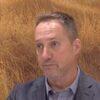
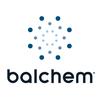

.jpg&w=3840&q=75)
